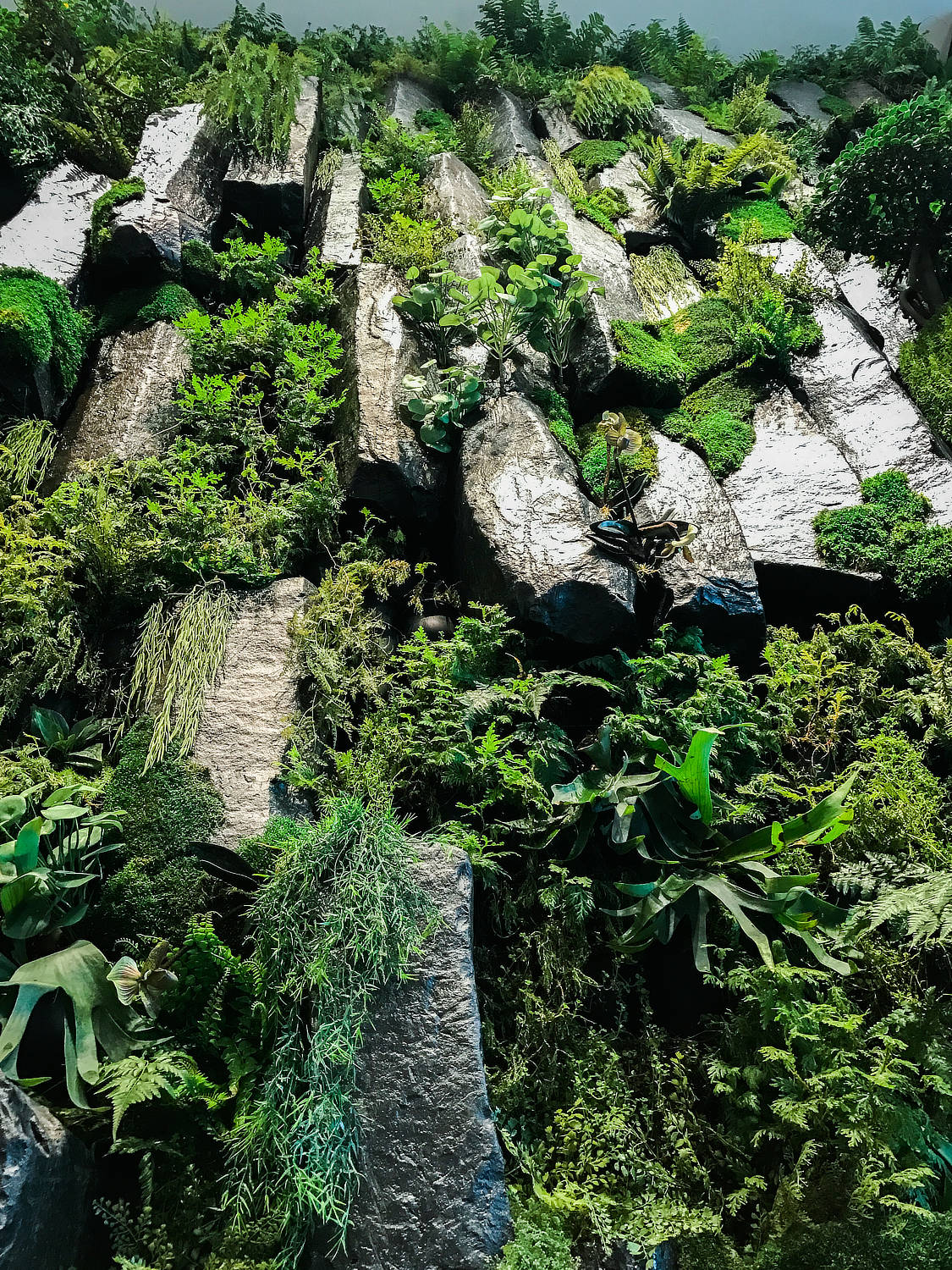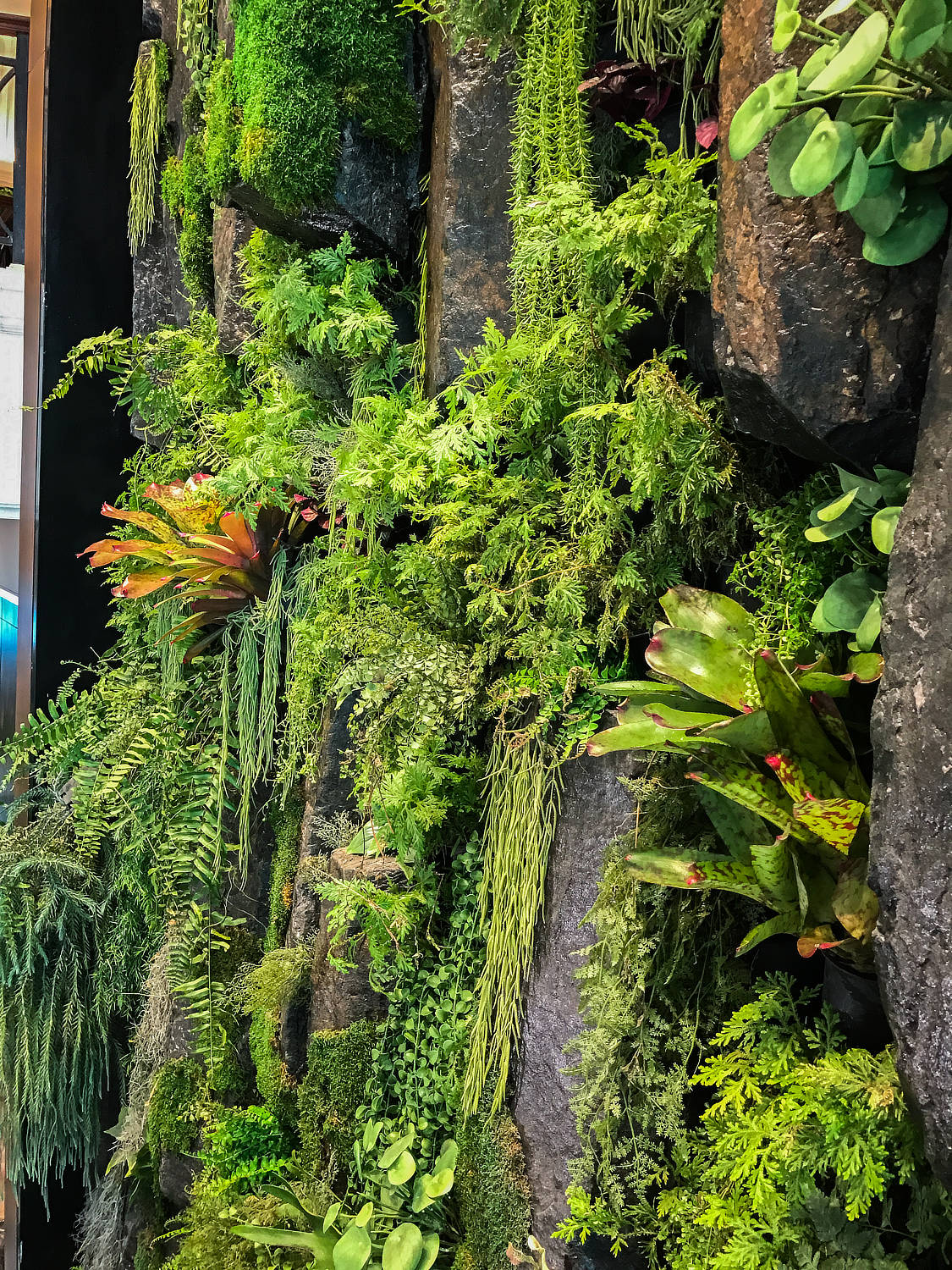With space at a premium the concept of vertical gardening is one that is becoming more and more common place not only in garden design but in commercial building as well. Having plants growing on wall is one thing but being able to do it without taking up any soil footprint means all the benefits of plants can be enjoyed in urban areas, balconies and other hard to grow areas too.
The benefits of vertical gardening are numerous and positive for both body and mind. Having between 30 – 40 plants per square meter means the air that comes into and out of a green wall is clean and pure with considerable reduction of VOC’s (volatile organic compounds). With this comes a feeling of wellbeing and issues with tiered eyes, headaches and sore throats are all reduced.
When vertical gardens are attached to the exterior of a building or even a garage wall in the home garden, they can have a profound effect on the ambient temperature. Plants absorb 50% of the heat and reflect another 30%. In offices the use of air conditioning on a hot day is reduced by 33%. So, they are perfect if you are trying to create a cool oasis both inside and out.
Just by looking at plants for 3 – 5 minutes a day has a proven effect on the reduction of stress (I have a feeling this is why my wife says any more laid back and I would be horizontal). When green walls are used inside a building, such as an office, this relaxing effect is given to all who pass by. If you’re planning a green wall it is a good idea to place a bench seat near it so you can sit and really enjoy it.
The addition of greenery on a building has an effect on sound as the density of planting and the framework required to support this growth will absorb 41% more sound. Used externally they also have an effect on the level of vandalism the building receives, giving us cleaner and more attractive cities.
In a commercial setting a vertical garden can be a costly operation, fully installed with plants, irrigation, fertilisation systems and grow lights the cost can be up near the $3,000 per square meter. Thankfully for the home gardener things can be simplified and there are some excellent options.
If you do have a spare bit of earth near a wall the most cost-effective option is a climber affixed to the wall. The issue is you need some soil for the plants to grow. A quick trip to the hardware store will introduce you to some prefabricated plastic modules, complete with pots, irrigation and fixings to a wall to bypass the need for earth. You can combine as many or as few as you like to create the look you are after.
When planting a green wall you need to stick to the old adage “the right plant for the right spot”. Green walls dry out quickly so sun or shade you need plants that can tolerate this or have enough irrigation to support the various plants. For sunny spots stick to succulents and other drought tolerant plants. For shady spots you can get a bit more tropical introducing philodendrons, walking iris and ferns.
Be prepared for some plants to fail, it’s part of gardening and in a green wall the death rate is a bit higher as its stressful living on the vertical plane. As such go for a system where the individual pots are removable so maintenance will be an easier task.
Most vertical gardening kits have irrigation built in or it can be added with ease for a bit of an extra cost, fertilising however is something that needs to happen by the user. I always use a liquid fertiliser as it can be applied to the leaves of the plants. The soil can also be treated in this way for the plants to obtain all the nutrients needed.


